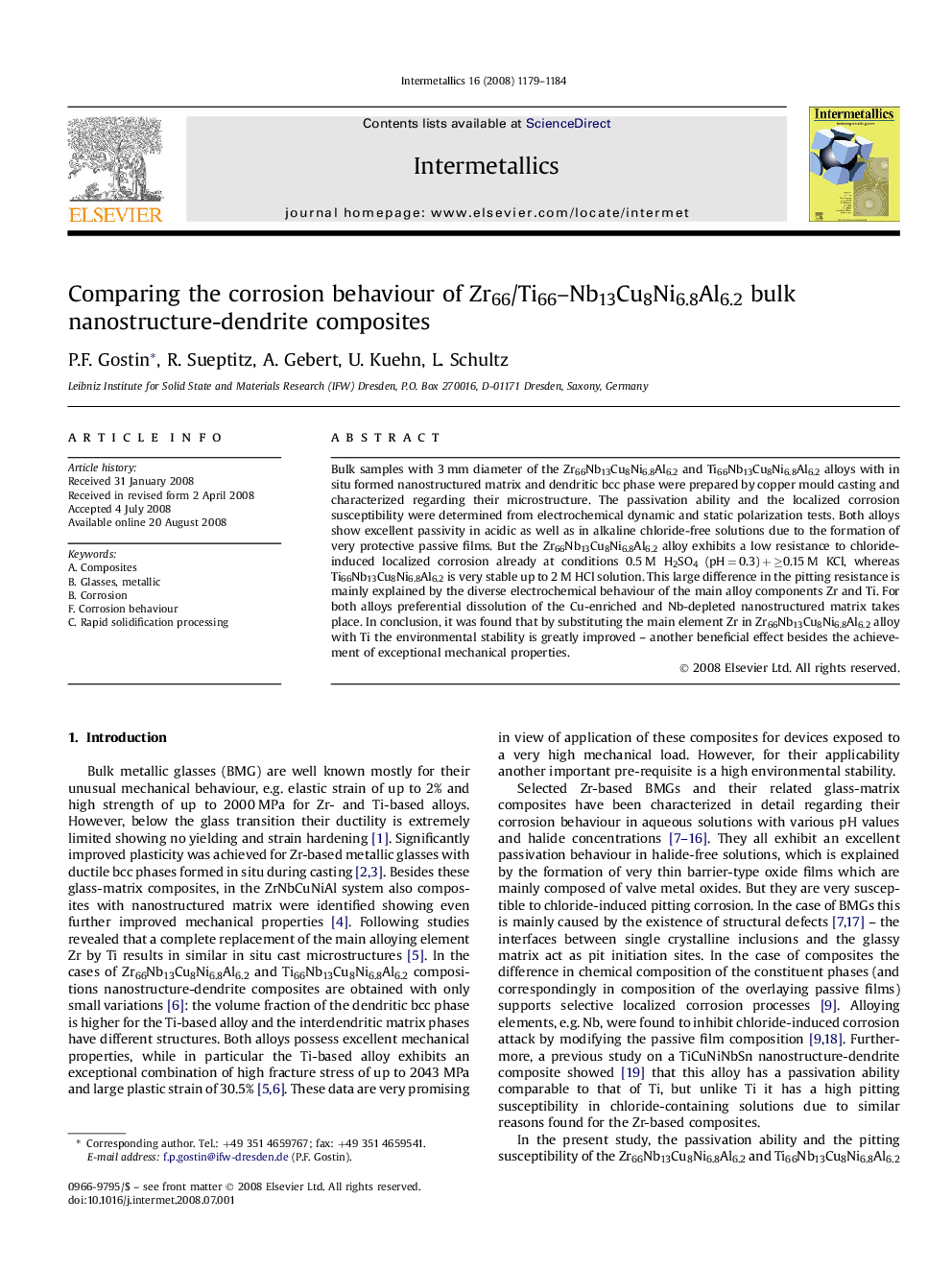| Article ID | Journal | Published Year | Pages | File Type |
|---|---|---|---|---|
| 1601302 | Intermetallics | 2008 | 6 Pages |
Bulk samples with 3 mm diameter of the Zr66Nb13Cu8Ni6.8Al6.2 and Ti66Nb13Cu8Ni6.8Al6.2 alloys with in situ formed nanostructured matrix and dendritic bcc phase were prepared by copper mould casting and characterized regarding their microstructure. The passivation ability and the localized corrosion susceptibility were determined from electrochemical dynamic and static polarization tests. Both alloys show excellent passivity in acidic as well as in alkaline chloride-free solutions due to the formation of very protective passive films. But the Zr66Nb13Cu8Ni6.8Al6.2 alloy exhibits a low resistance to chloride-induced localized corrosion already at conditions 0.5 M H2SO4 (pH = 0.3) + ≥0.15 M KCl, whereas Ti66Nb13Cu8Ni6.8Al6.2 is very stable up to 2 M HCl solution. This large difference in the pitting resistance is mainly explained by the diverse electrochemical behaviour of the main alloy components Zr and Ti. For both alloys preferential dissolution of the Cu-enriched and Nb-depleted nanostructured matrix takes place. In conclusion, it was found that by substituting the main element Zr in Zr66Nb13Cu8Ni6.8Al6.2 alloy with Ti the environmental stability is greatly improved – another beneficial effect besides the achievement of exceptional mechanical properties.
